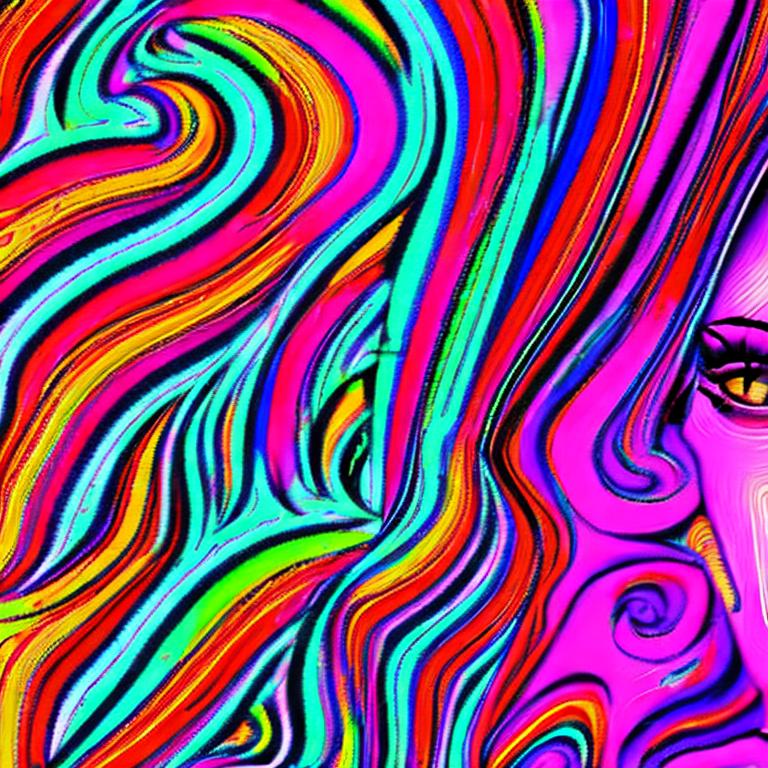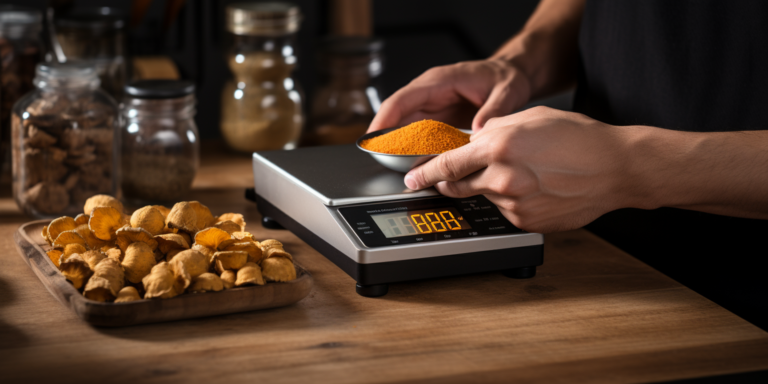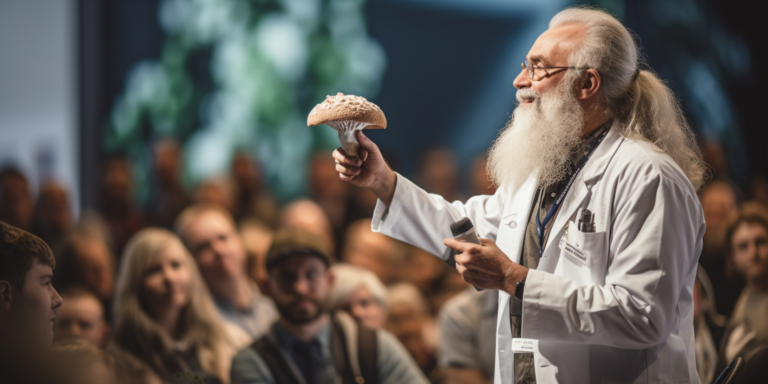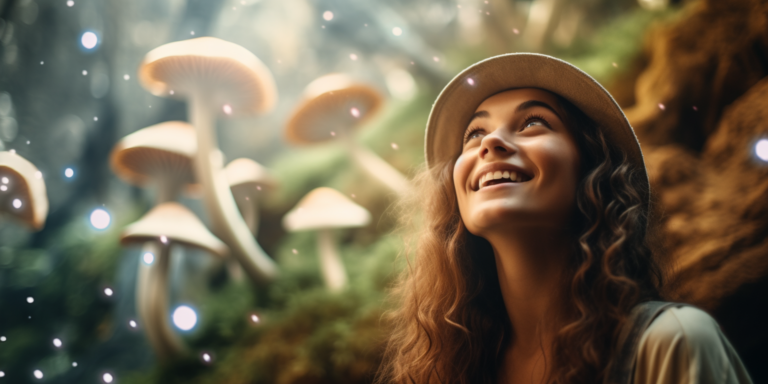Microdosing Mushrooms and LSD for Depression

Now, you may or may not know that psychedelic compounds are making a comeback. Right now, research and public interest in psychedelics like mushrooms and LSD is rapidly growing. Psychedelics were popularized in the 1960s by the anti-war movement and then made illegal in 1970. Recently, psychedelics have reemerged as their potential as medicines, therapeutic agents, and spiritual tools, with professionals like Joe Rogan, Mike Tyson, Tim Ferriss, Steve Jobs, and Tony Robbins coming out about their psychedelic healing experiences.
One of the hottest topics right now is microdosing psychedelics.
What is microdosing you may ask?
Well, it’s just like it sounds. Microdosing is when you take a very small amount of a psychedelic, such as mushrooms or LSD. About 1/10 or less of a typical full dose. This very small microdose produces very subtle effects without causing you to have a full psychedelic experience. Most people can function normally while on their LSD or mushroom microdose and go to work, drive, spend time with their kids, and function quite fine.
Many people find microdosing benefits their ability to focus, mood, creativity, athletic performance, stamina, and energy levels. Microdosing mushrooms and LSD has become a big thing in the entrepreneurial and tech spaces, specifically in silicon valley, for productivity and creative problem solving. Most commonly, people microdose psilocybin mushrooms and LSD over other psychedelics like ayahuasca, DMT, and ibogaine due to their availability and safety track record.
Microdosing for depression
Clearly, there’s a wide use case for microdosing psychedelics like mushrooms, LSD, DMT, ayahuasca mescaline, ibogaine, and other substances. But one of the most valuable applications, if you ask me, is microdosing psychedelics for depression. As you’re probably aware, depression affects millions of people and can be one of the most painful, crippling mental states you can experience. For a lot of people, antidepressant medications and talk therapy simply don’t work and can have nasty side effects including suicide.
Research at top medical institutions like Johns Hopkins and the Beckley Foundation have studied the active psychedelic ingredient in mushrooms, called psilocybin, specifically in its ability to rapidly improve depression. In their studies, participants are receiving large doses of psilocybin, which results in a strong psychedelic and hallucinogenic experience, which can sometimes even facilitate a mystical experience.
But not everyone with depression should have or has access to a full psilocybin experience. A full dose can be a frightening experience for some individuals, and not everyone has the right integration support, or even brain chemistry to do well with a full-on psychedelic experience. That’s one of the great things about microdosing. It’s so easy. Your grandmother could do it!
Microdosing mushrooms and LSD for depression has tremendous anecdotal evidence of its benefits. Many people who have tried all sorts of conventional treatments for their depression have gotten outstanding results microdosing mushrooms and LSD.
How does microdosing work?
So how does microdosing work for depression? What is it actually doing? While there’s still largely so much we don’t know about how psychedelics work, and there are a few things we do know.
1. Psychedelics decrease activity in the Default Mode Network(DMN) of the brain.
The DMN is a network in the brain that acts as a filter for sensory information. It helps us only consciously pay attention to what’s important and filter out what is deemed unimportant information. When this part of the brain becomes over-active, it can lead to rumination of negative thoughts and result in depression, negativity, and anxiety. Psychedelics disrupt this “stuckness” in the DMN and help restore normal, healthy function, thus improving mood and decreasing negative rumination.
2. Psychedelics upregulate BDNF and increase neuroplasticity.
BDNF, or brain-derived neurotrophic factor, is a protein that acts as fertilizer for brain cells. It prompts the growth and repair of new neurons, dendrites, and synaptic spines. Psychedelics like LSD, ayahuasca, and Psilocybin mushrooms boost BDNF in the brain. This leads to the formation of new neural networks and increases in brain tissue density. Studies show that people with depression have reduced levels of BDNF and, as a result, atrophy of brain tissue. Microdosing mushrooms, LSD, and other psychedelics give your brain a little boost in BDNF to repair and regenerate brain networks damaged due to depression.
3. Psychedelics are anti-inflammatory
There is emerging evidence that psychedelics have potent anti-inflammatory effects, especially in the brain. Research on depression and anxiety has shown strong associations between inflammation and mental illnesses. Psychedelics modulate inflammation by activating serotonin receptors. Microdosing psychedelics could likely provide anti-inflammatory benefits to the brain and relieve depression in individuals.
4. Psychedelics can unlock blocked emotions and give you access to healing them.
A lot of times, suppressed and subconscious emotional pain is part of our struggle with depression. While many full-dose psychedelic experiences can definitely be cathartic, even in microdosing we are able to access our emotions easier and process them more consciously. Psychedelics seem to disrupt our mechanism for holding down and ignoring trauma and pain. When we take them, they get unleashed and surface so that we can witness and release them.
Microdosing safely
So microdosing mushrooms and LSD sounds pretty great, right? But hold your unicorns there, ladies and gents. While the benefits are certainly impressive, there are always risks and side effects with any medicine or intervention.
Here are some tips on how to microdose mushrooms and other psychedelics safely.
-
Measure carefully
I can’t tell you how many people, including myself, have accidentally taken more than they intended to before. This has definitely happened to me a couple of times, where I think I’m taking a small amount and then end up actually getting high and have to go lay down in my bed trippin the rest of the day instead of getting any work done. Don’t eyeball it, just measure.
Be sure that you know exactly what dosage your supply is. If you’re getting a microdose set up made for you already, ask the provider what the appropriate dosage is, and make SURE you write it down somewhere. If you’re making your own microdose setup, be sure you know the potency and dosage of your starting material and that you double-check your math carefully.
-
Label your items
Label your items, so you don’t accidentally take them or give them to someone when you don’t mean to. Obviously, given the illegal nature of these things, maybe don’t label them as “illicit drugs right here, arrest me” but something clever so that you know what it is, like unicorn tears, or a drawing of a mushroom, or label it as “ fun reishi”.
-
Microdosing is not for everyone
Do not microdose if you have a history of bipolar disorder, mania, schizophrenia, or psychosis. While psychedelics are amazing and could potentially be used to heal some of these conditions with a skillful doctor, they are very risky when used in people with preexisting mental illnesses such as these. Unipolar depression and anxiety don’t seem to pose a risk of psychosis.
-
Unknown long-term consequences
We still don’t know what the long term effects of microdosing are. While so far they seem to have an impressive safety record, we simply just don’t know what happens when we microdose every day for 20 years. Psychedelic pharmacologist David Nichols cautions that pharmaceutical drugs that target one of the receptor sites that psychedelics bind to, the 5ht2B receptor, have been associated with heart valvular pathologies. Drugs that activate this receptor have been pulled for the market for their lack of safety. It’s unclear if regular psychedelics exposure via microdosing could potentially cause a similar issue or not. So far there is no evidence to believe they do, but given that some psychedelics also bind to this 5ht2b receptor, caution must be taken.
-
Make sure you have support
Even some microdoses of psychedelics can bring up emotional content. Make sure that you are resourced with social support in case some difficult content comes up for you. Having close friends to reach out to, as well as a therapist is recommended if you intend to try microdosing mushrooms or other psychedelics for depression. There are more and more psychedelic integration circles and support groups sprouting up. Check to see if there’s a psychedelic community meet up near you. If not, there are lots of online forums.
So, while there is incredible anecdotal evidence of the benefits of microdosing, like any intervention, it must always be carefully considered for each individual’s situation and needs.
More Microdosing Guides
To learn how to make your own DIY microdose setup, be sure to tune in to Part 2 and Part 3 of our microdosing series.
Part 2- How to Microdose Mushrooms
Part 3- Make your own LSD microdose setup
Scientific Resources
1. Nichols DE. Psychedelics. Pharmacol Rev. 2016;68(2):264-355. doi:10.1124/pr.115.011478
https://www.ncbi.nlm.nih.gov/pubmed/26841800
2. Baquiran M, Al Khalili Y. Lysergic Acid Diethylamide (LSD, Entactogen) Toxicity. In: StatPearls. StatPearls Publishing; 2020. Accessed May 8, 2020. http://www.ncbi.nlm.nih.gov/books/NBK553216/
3. Smigielski L, Scheidegger M, Kometer M, Vollenweider FX. Psilocybin-assisted mindfulness training modulates self-consciousness and brain default mode network connectivity with lasting effects. Neuroimage. 2019;196:207-215. doi:10.1016/j.neuroimage.2019.04.009
4. The psychedelic state induced by ayahuasca modulates the activity and connectivity of the default mode network. – PubMed – NCBI. Accessed May 8, 2020. https://www.ncbi.nlm.nih.gov/pubmed/25693169
5. Psychedelics Promote Structural and Functional Neural Plasticity. Accessed March 14, 2020. https://www.ncbi.nlm.nih.gov/pmc/articles/PMC6082376/





